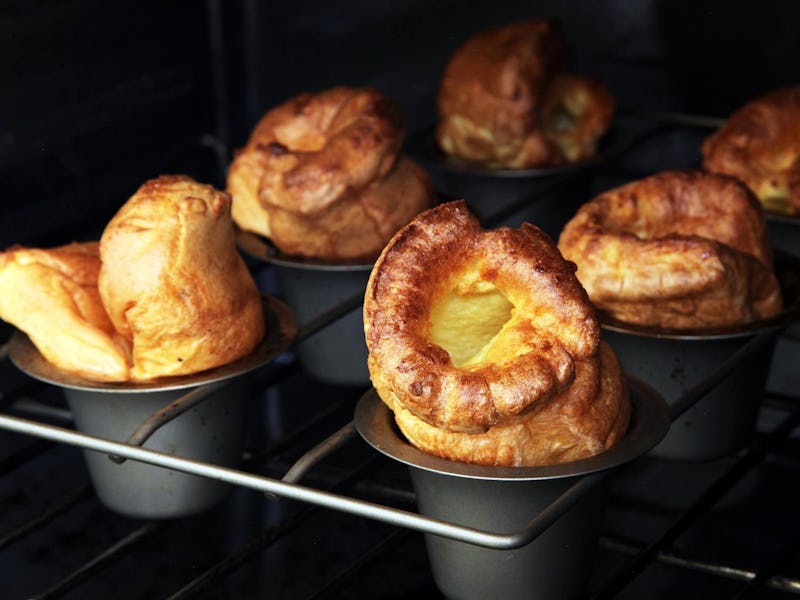How Hannah Glasse's Yorkshire Puddings Rose to Legendary Status
The pudding is a source of intense debate.

Google commemorated the life of London-born cookbook writer Hannah Glasse on Wednesday, whose 1747 work The Art of Cookery Made Plain and Easy holds claim to the first written-down recipe for Yorkshire Pudding. Glasse, whose book went on to become a bestseller, used simple language to help transform the pudding and 971 other recipes into beloved foods of the United Kingdom. The pudding is a source of local pride, a foodstuff of great debate — one that even pushed the Royal Society of Chemistry to publish guidance.
The pudding has changed considerably over the years. Originally it was a flat pudding served with gravy before the main course, designed to suppress the appetite for more expensive meat. Over the years it’s transformed into a fluffier creation designed to go with a traditional British roast dinner.
Sign up for our newsletter to get the best of Inverse sent straight to your inbox. Click here to subscribe
Glasse didn’t exactly invent the Yorkshire pudding. Before her cookbook, it was known as “dripping pudding.” Cooks in northern England used the fat from cooking meat that settled in the dripping pan, and mixed it with the wheat flour that was regularly used for making cakes. It first appeared in a 1737 cookbook called The Whole Duty of a Woman, but it was Glasse’s book that gave it today’s name.
Illustrator Matthew Cruick drew the below doodle to commemorate what would have been Glasse’s 310th birthday:
Hannah Glasse 310th Birthday Google Doodle
Author Peter Brears claims the pudding became associated with the historic northern county of Yorkshire because miners in the area got free coal as part of the job, and they loved serving different meats on a regular basis. That meant lots of opportunities to make puddings from the fat.
In 2008, the Royal Society of Chemistry issued a statement that claimed a Yorkshire pudding is not deserving of the name if it’s less than four inches tall, alongside an official recipe for the ideal pudding. It followed an Englishman living in Boulder, Colorado, who struggled to make his creations rise in the higher altitudes. Claiming the act of cooking is “chemistry in the kitchen,” the society described Yorkshire puddings as simply “carbohydrate + H2O + protein + NaCl + lipids.”
“I have seen many grim results from people who have tried to get their Yorkshires to rise. They frequently made gross errors,” chemical scientist John Emsley said in the society statement. “Some amateurs even place the batter in the fridge first. What kind of foolish act is that?”
Yorkshire pudding has seen big innovations over the years. Toad-in-the-hole, a dish that emerged in the late 19th century, is a dish of sausages contained in Yorkshire pudding batter. Some have taken to making larger puddings and placing inside the ingredients of a roast dinner, creating an edible container similar to the clam chowder bread bowls of New England. Last year, the York Roast Co went viral with its Yorky Pud Wrap, containing a roast dinner in a unique format:
Looking to try your own? October 13 is National Yorkshire Pudding Day in the United States.